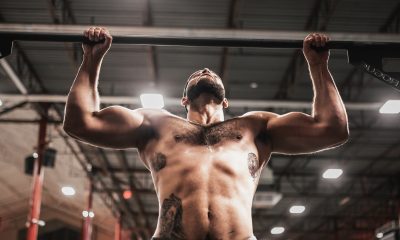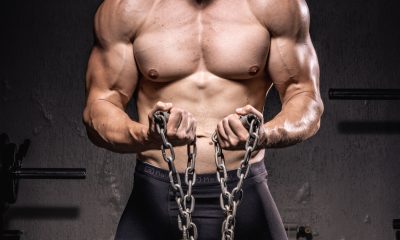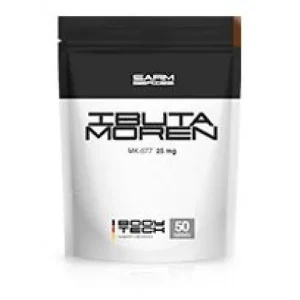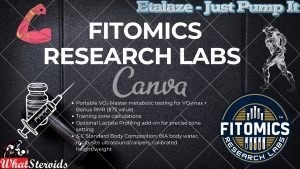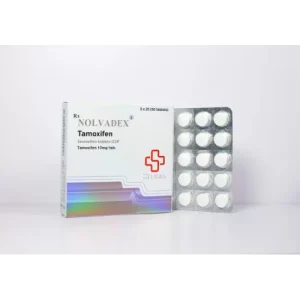Bodybuilding
How Good Are Bodyweight Exercises
Bodybuilding is mostly composed form weight training. People who work hard in the gym use free weight training for better results possible. Free weight training usually includes exercises with dumbbells or barbells. However, there are many people who want to know the importance of bodyweight exercises for building muscle mass and their effectiveness. Bodyweight exercises are largely associated with other types of the sport like fitness, and less used in bodybuilding.
The truth of this matter is that bodyweight exercises can give you fastest results in terms of your muscle growth. Bodyweight exercises do not require any additional weight to be performed. From the technical point of view, they are quite easy to execute, are effective and available for all people who want at least to diversify their workout.
Bodybuilders who use their own body weight for core exercises know that they involve in work all group muscles at once and injury risk is quite lower than in other cases. There are no risks to fall weights you work with on you and to get you injured, even you fall yourself ( in these cases consequences are quite small).
The average men weigh in kilograms between 60 to 90. And this is not a small weight. All you have to do in case of bodyweight exercises is to learn to use this weight instead of free weights. This is another reason for including bodyweight exercises in a workout program since even you have not all condition for training or you can get to the gym you can choose to train at home or elsewhere. All you need you have with you, and this can be a great advantage.
The best bodyweight exercises are considered pull-ups/chin-ups, push-ups, squats, dips, calf raises and lunges. Since there can be other variation of these movements, we just mention that bodyweight exercise is any exercise that requires to move in space your torso with no other resistance than your own body.
You can consider bodyweight exercises if you want to achieve one of the following goals:
-Reach asymmetrical growth of your muscle groups;
-Develop general endurance and improve power performance;
-Get the hypertrophy of muscles in their natural geometry;
-Get rid of extra fat
-Get muscle definition.
This is not an exhaustive list of all good effects bodyweight training may have on our body. Along with these points, have to be mentioned bodyweight exercises have a great impact on increasing muscle strength and building muscle mass. They give best results as are involved in work all muscles fibers and use several stabilizer muscles too.
Let’s analyze further each of these bodyweight exercises, mentioned their specific and which group of muscles their work. Push-ups are at the top of the list since they are the most common among bodybuilders. And it’s absolutely right to be so since they offer a full-body workout beginning with abs to the gluteus muscles.
To do it you have to get into a prone position. Raise and lower your body using the arms, while keeping your back straight and toes touching the ground. There are many variations for this type of exercises. This one is the most simple and is best for beginners.
But once you get stronger, you can choose to do push-ups by placing the legs on the incline or even do them with a single arm. The push-ups are very effective in increasing strength of chest, shoulders and the triceps muscles of the upper arms.
Pull Ups:

Pull-ups and chin-ups are great exercises for developing muscles of the upper back, such as rear deltoid, trapezius, erector spine and especially the latissimus dorsi. In the same way, they greatly work biceps, brachialis, and abdomen. To perform them you will need a bar.
If you are not in a gym and are going to use an improvised bar, make sure it is enough solid and secure to keep you safe while exercising. To do this exercise grab the bar with an overhand grip a bit wider than shoulder width. Pull your body up until your mouth reaches the bar level, or go even higher the level of your chin.
After this, slowly lower your body until you reach the starting position. This exercise has many variations too. Thus you can choose to do wide or narrow grips, changing leg position and others.
Dips:

Dips are great exercises for developing triceps, chest, and back muscles. You can do them on a simple bench or choose a special machine for this. To perform this exercises you will hang from a bar, keeping your arms straight and shoulders above the hand. Lower your body until the elbow creates a 90 degrees uncle and then raise it. As you get stronger you can choose do not bend your legs at 90 degrees, but to keep them stretched out in front of you.
Checkout Our Article:: 18 Week Chin Up & Dip Program for An Impressive Upper Body
Calf Raises:

Calf raises are best exercises for building and strengthen the muscle of the lower leg. They are performed in a standing position by trying to raise the heel as high as possible. To increase the level of difficulty, you can do it standing in one leg.
Lunges:

Lunges are is one of the most popular bodyweight exercises. It refers to exercises when a leg is positioned forward with knee bent, while the other leg is situated behind. This exercise can be performed in a wide variety, and it worth to try each of them as they provide different effects.
You can choose them with arms on the side, in front of you or crossed them on your chest. Have to be said that the ability for doing more complex movements comes with time, thus begin with the simplest one and go for more difficult once you get stronger.
Related Article:: Extreme Dumbbell Lunges Exercises
Squats:

The squats are very easy to do and maybe one of the most preferred by all the people, not only bodybuilders. During squats, exercises are usually worked legs and butt muscles. To do them, in a standing position, bent your legs at the knees and hips, and squats down keeping your back straight. Come back to the starter position and repeat the movement. If you are a beginner than opt for three sets of 10 repetitions.
There are many other exercises that can be included in bodyweight exercises. But crunches is the one that worth to be mentioned here. They are perfect for working abdominal muscles and can be done in a variety of ways. If you want to build muscle mass you have not to think that bodyweight exercises cannot help you with this task. The best method to add muscle mass is to increase the intensity of the workout.
Usually, you choose some exercises and do a number of reps for each of them. If you do supersets than you have to perform one more exercise designed for another group of muscles and do a certain amount of reps. Do it for 15 minutes. For example, you do 3-5 push-ups, then the same amount of pull-ups, then repeat them until you feel unable to do more.
After this increase the time of rest between sets. If you can not do supersets, just increase the rest time between sets to 10 seconds and keep doing them. Keep increasing the amount of rest between sets as necessary, until you finish those 15 minutes of training.
Must Read Our Article:: 9 Squats Variations For Bigger Muscles
Also, you can alter the speed of exercise execution, this being another trick for increasing training intensity. In order to increase the muscle mass, you can choose to do push-ups under different angles. Also, a big influence on building muscle mass has the diet. Make sure you follow a protein-rich diet, including supplements too.
Bodyweight Exercises:

Bodyweight Exercises can be successfully used for increasing body strength too. For this purpose you have to do fewer reps but more difficult. How to do it? It is quite simple, choose to do a more difficult variation of bodyweight exercises like with one arm or one leg. Also, you can use some additional weight for more load.
What Not to Do in Case of Bodyweight Exercises?
If you want to make your bodyweight workout as effective as possible, then pay attention to the following details:
- Always make sure you are changing up your bodyweight exercises. Do not stick to a certain workout routine, and change your exercises, a number of reps once a week or two. It may be more simple for you to follow the same exercise program, but if you keep it unchanged more than two weeks than your body reaches that plateau and further no muscle grow will be seen.
- Do not too long pause between sets. Bodyweight exercise has proved to be more effective if the rest between sets is much shorter than other types of workouts. Thus, try to go through sets with minimal pause required.
-Listen to your body. If you feel a pain or uncomfortable to perform a kind of movement than is better to abandon. Your body gives your signals, and you have to listen to them. This will keep you free of any injury anytime.
As you see bodyweight exercises are very effective for building muscle mass and increasing muscle strength. Additionally, they are great for other purposes too like get rid of fat, get a symmetrical growth of the different group of muscles, get muscle definition and others.
Must Read: How To Win The War Against Body Fat
Bodybuilding
Is Training/Lifting Barefoot A Good Idea? Find Out

For decades, the gym floor has echoed with the thud of cushioned sneakers, lifting shoes, and high‑tech trainers promising better stability, more power, and improved performance. Yet in recent years, a surprising shift has taken hold among serious lifters: many are kicking off their footwear entirely. What began as a fringe practice—often dismissed as quirky or unsafe—has evolved into a growing movement embraced by bodybuilders, powerlifters, and functional fitness athletes who swear that training barefoot unlocks a deeper, more natural kind of strength.
At first glance, the idea seems almost counterintuitive. After all, modern athletic shoes are engineered with layers of support, padding, and structure. But that’s exactly the point. As lifters push for better technique, stronger lifts, and more efficient movement patterns, many are realizing that all that cushioning may be doing more harm than good. By removing the barrier between foot and floor, barefoot training forces the body to engage stabilizing muscles that shoes often mute. The result? A stronger foundation, improved balance, and a more connected kinetic chain from the ground up.
Beyond performance, the barefoot trend taps into a broader shift toward natural movement and functional strength. Lifters are rediscovering the importance of foot mechanics—how the toes grip, how the arches support, and how the ankles align. These subtle details influence everything from squat depth to deadlift power. And as more athletes experiment with barefoot sessions, they’re finding that the benefits extend far beyond the feet themselves.
Of course, going shoeless in the gym isn’t just about following a trend. It’s about rethinking how we build strength, questioning long‑held assumptions, and exploring what happens when we strip training back to its most primal form. Serious lifters aren’t throwing away their shoes for style—they’re doing it for results.
Click Here to Buy Ibutamoren 50 Tabs by BodyTech
Advantages of Training Barefoot for Pro Bodybuilders
For professional bodybuilders, every detail matters—how the body moves, how muscles fire, and how efficiently force transfers through the kinetic chain. Training barefoot has emerged as a surprisingly effective way to refine these details and unlock performance benefits that shoes often mask.
One of the biggest advantages is enhanced stability. Without the interference of thick soles or elevated heels, the feet can spread naturally, creating a wider, more grounded base. This stability is crucial during heavy compound lifts like squats, deadlifts, and lunges, where even minor wobbling can compromise form or reduce power output. Barefoot training allows bodybuilders to feel the floor directly, improving balance and control under load.
Another major benefit is greater activation of stabilizing muscles, especially in the feet, ankles, and lower legs. Modern footwear often restricts natural movement, causing these smaller muscles to weaken over time. Training barefoot forces them to engage, strengthening the foundation that supports every lift. For bodybuilders, this translates to better joint integrity, improved symmetry, and reduced risk of chronic overuse injuries.
Barefoot lifting also enhances proprioception—the body’s ability to sense position and movement. With more sensory feedback from the ground, athletes can fine‑tune their technique, adjust their stance, and maintain optimal alignment throughout each rep. This heightened awareness can improve squat depth, deadlift mechanics, and overall lifting efficiency.
Must Read: The Proper Approach to Buying Steroids Online (updated)
Additionally, training without shoes encourages more natural biomechanics. The feet move freely, the arches function as intended, and the ankles maintain a neutral position. This can help correct imbalances caused by years of training in restrictive footwear, ultimately supporting better long‑term performance.
For pro bodybuilders chasing marginal gains, barefoot training offers a simple yet powerful way to build strength from the ground up—literally. It’s not just a trend; it’s a strategic tool for maximizing muscle engagement, improving technique, and enhancing overall athletic longevity.
Possible Downsides of Lifting Barefoot
While barefoot training has gained popularity among casual lifters for its “natural” feel and improved ground contact, the situation is very different for professional bodybuilders. At elite levels, athletes handle extreme loads that demand maximum stability, protection, and performance efficiency. Without proper footwear, the risks multiply — from injuries and reduced leverage to hygiene concerns and long-term joint stress. The following points highlight why barefoot lifting can be problematic for pro bodybuilders.
1. Reduced Foot Protection
Bare feet leave you vulnerable to dropped weights, sharp objects, or heavy equipment. For pro bodybuilders handling massive loads, this risk is amplified.
2. Higher Risk of Injury
Without shoes, the bones, tendons, and ligaments in your feet absorb more stress. Heavy squats or deadlifts can easily cause sprains or fractures.
3. Lack of Arch Support
Shoes provide structural support that helps prevent issues like flat feet or plantar fasciitis. Barefoot lifting removes that safeguard.
4. Instability Under Heavy Loads
Gym floors can be slippery or uneven. Shoes add grip and stability, while barefoot training increases the chance of wobbling or losing balance.
Related Article: Muscle Density Decoded: Why Hardness Beats Size
5. Reduced Performance in Certain Lifts
Olympic lifts and squats often benefit from raised heels or firm soles. Barefoot training limits leverage and can reduce maximum output.
6. Increased Stress on Ankles and Knees
Without cushioning, impact forces travel directly into the joints. Over time, this can contribute to chronic pain or injury.
7. Hygiene Concerns
Gyms are breeding grounds for bacteria and fungi. Training barefoot raises the risk of infections like athlete’s foot.
8. Limited Leg Drive in Deadlifts
While barefoot deadlifting improves ground contact, it reduces leverage compared to specialized lifting shoes designed for maximum force transfer.
9. Not Competition-Ready
Most bodybuilding and powerlifting competitions require footwear. Barefoot training doesn’t translate well to actual performance standards.
10. Potential Long-Term Damage
Repeated barefoot lifting under heavy loads can cause chronic foot problems, misalignment, and reduced career longevity.
Overall
As we mentioned earlier, training barefoot has become a trend among some athletes, but for professional bodybuilders the practice carries both potential benefits and serious drawbacks. On the positive side, lifting without shoes can improve proprioception — the body’s awareness of movement and position — which may enhance balance and stability during certain exercises. Barefoot training also strengthens the small muscles of the feet and ankles, potentially reducing reliance on supportive footwear. For lifts like deadlifts, direct contact with the floor can improve force transfer and reduce unnecessary elevation caused by cushioned soles.
However, the disadvantages are far more significant at elite levels. Bare feet lack protection against dropped weights or sharp equipment, exposing bodybuilders to severe injury risks. Without arch support or cushioning, stress is shifted to the ankles, knees, and hips, increasing the likelihood of chronic pain or joint damage. Performance in squats and Olympic lifts often suffers, since specialized shoes provide leverage and stability that barefoot training cannot replicate. Hygiene is another concern, as gym floors harbor bacteria and fungi. Finally, barefoot lifting does not align with competition standards, where footwear is mandatory.
In short, while barefoot training offers some functional benefits, professional bodybuilders face greater risks that outweigh its advantages.
Anabolic Steroids
Using Insulin Needles to Inject AAS: Pros and Cons
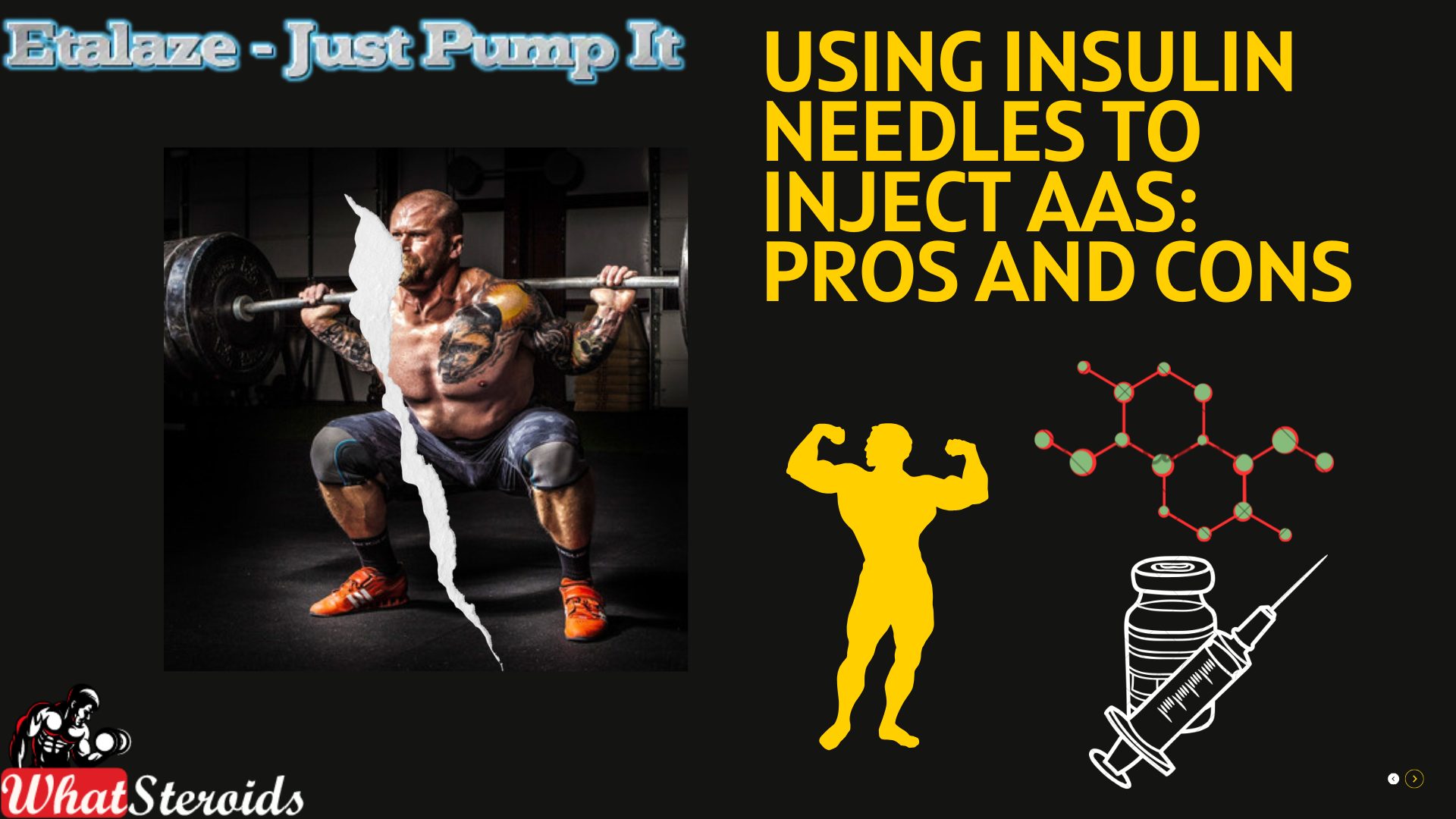
Bodybuilding has long been associated with the pursuit of physical excellence, where athletes and enthusiasts dedicate themselves to sculpting muscular physiques. You need rigorous training, disciplined nutrition, and, in some cases, the use of performance-enhancing substances. Among these substances, anabolic-androgenic steroids (AAS) occupy a controversial space. While medically prescribed for specific conditions, AAS are often used to accelerate muscle growth, improve recovery, and enhance overall performance. Their use, however, is fraught with ethical, legal, and health-related concerns.
One practical issue that arises in this context is the method of administration. AAS are typically injected intramuscularly, requiring needles that can deliver oil-based solutions deep into muscle tissue. Yet, some individuals turn to insulin needles—originally designed for subcutaneous delivery of insulin—as an alternative. This choice is often motivated by the perception that insulin needles are less intimidating, less painful, and more discreet. For bodybuilders who may be inexperienced with injections, the appeal of a smaller, finer needle can be strong.
Click Here to Buy Boldenone Undecylenate 250 mg/ml by Hilma Biocare
However, the suitability of insulin needles for AAS administration is highly debated. While they may offer certain conveniences, their limitations in terms of depth, absorption, and compatibility with thicker solutions raise significant concerns. Misuse can lead to complications ranging from ineffective dosing to infections and tissue damage.
Must Read: Running and Bodybuilding: Is it a Good Idea to Mix Them?
In bodybuilding culture, where experimentation and peer influence often shape practices, understanding the pros and cons of using insulin needles for AAS injections is essential. By examining both benefits and the potential risks, we can better appreciate the complexities of AAS injection and emphasize the importance of informed, responsible decision-making.
Why Insulin Needles
Insulin needles are generally preferred for many types of injections because they are shorter, thinner, less painful, and reduce the risk of complications compared to larger needles
Patient comfort: Insulin needles are designed to minimize pain. Their fine gauge and short length make injections less intimidating and more tolerable, especially for people who need frequent injections.
Reduced risk of complications: Shorter needles lower the chance of hitting muscle or nerves when delivering medication subcutaneously. This reduces risks like bruising, bleeding, or accidental intramuscular injection
Effective delivery: For insulin and other subcutaneous medications, shorter needles are just as effective as longer ones. They ensure the drug reaches the correct tissue layer without unnecessary depth.
Ease of use: Their design makes them simple to handle, even for patients self-administering injections daily. This accessibility encourages adherence to treatment
Compatibility with subcutaneous injections: Many medications besides insulin—such as certain vaccines, hormones, and biologics—are delivered under the skin. Insulin needles are well-suited for these because they match the required depth and absorption rate.
Insulin Needles vs. Intramuscular Needles in Bodybuilding
When it comes to injecting anabolic-androgenic steroids (AAS), bodybuilders often weigh the choice between insulin needles and traditional intramuscular needles. Insulin needles are very fine and short, usually ranging from 29 to 31 gauge and only a few millimeters in length. This makes them far less intimidating and significantly less painful to use. For athletes who inject frequently, the reduced discomfort and minimal scarring are appealing, especially since visible bruising or scar tissue can detract from the aesthetic goals of bodybuilding. Their wide availability in pharmacies and association with legitimate medical use also adds to their convenience and discretion.
However, insulin needles are designed for subcutaneous injections, meaning they deposit medication just under the skin. AAS, on the other hand, are typically oil-based compounds that require intramuscular delivery for proper absorption. The fine bore of insulin needles makes drawing and injecting these thicker solutions difficult, and their short length often fails to reach muscle tissue. This mismatch can lead to poor absorption, underdosing, or even localized complications such as abscesses and tissue irritation.
Intramuscular needles, by contrast, are longer and thicker—usually 21 to 25 gauge and 25 to 40 millimeters in length. While they cause more pain and can be intimidating for beginners, they are specifically designed to deliver oil-based substances deep into muscle tissue. This ensures that AAS are absorbed effectively and reduces the risk of complications when used correctly. Over time, repeated intramuscular injections may cause bruising or scar tissue, but medically they remain the appropriate tool for this type of administration.
In short, you may prefer insulin needles for their comfort, accessibility, and cosmetic advantages, but intramuscular needles remain the medically suitable option for AAS injections. The perceived safety of insulin needles does not outweigh the risks of improper delivery, making the choice more about convenience than effectiveness.
Downsides of Using Insulin Needles for AAS in Bodybuilding
For bodybuilders, the downsides of insulin needles in AAS use are significant: poor absorption, infection risk, tissue damage, and wasted product. While they may reduce pain and appear more convenient, they compromise both safety and effectiveness. In bodybuilding culture, where results are paramount, these drawbacks make insulin needles a risky and counterproductive choice.
Improper absorption
Insulin needles are designed for subcutaneous injections, but AAS typically require intramuscular delivery. Injecting into fat or shallow tissue can lead to poor absorption, reduced effectiveness, and unpredictable results.
Also See: Fitness Lessons from A Navy Seal’s Training Routine
Viscosity mismatch
AAS solutions are often oil-based and much thicker than insulin. Fine-gauge insulin needles struggle to draw and push these solutions, leading to blocked syringes, incomplete injections, or excessive force that damages tissue.
Risk of infection and abscesses
Because oil may pool in subcutaneous tissue instead of dispersing into muscle, it can irritate the area and create a breeding ground for bacteria. This raises the risk of painful abscesses that may require medical intervention.
Underdosing and wasted product
If the steroid doesn’t reach the muscle, the bodybuilder may not achieve the intended anabolic effect. This not only wastes expensive compounds but also tempts users to increase frequency or dosage, compounding health risks.
Tissue damage
Repeated shallow injections can cause lumps, irritation, or necrosis in fatty tissue. For bodybuilders focused on aesthetics, visible damage under the skin undermines their goals.
False sense of safety
Many athletes assume insulin needles are “safer” because they are smaller and widely used in diabetes care. In reality, this perception can mask the fact that they are medically inappropriate for AAS, leading to dangerous practices.
Related Article: Best Syringes for Steroid Injection on Amazon
Overall
Bodybuilders and athletes often face difficult choices when it comes to performance enhancement, and the method of administering anabolic-androgenic steroids (AAS) is one of them. Insulin needles, with their fine gauge and short length, are attractive because they reduce pain, minimize scarring, and are easy to obtain. For individuals who inject frequently, these qualities can seem like practical advantages.
However, the reality is that insulin needles are not designed for oil-based compounds that require intramuscular delivery. Their short length and narrow bore make them unsuitable for reaching muscle tissue, leading to poor absorption, underdosing, and potential tissue irritation. The risk of infection or abscess formation is also heightened when AAS are deposited into fatty tissue rather than muscle. What may appear to be a safer, more comfortable option can ultimately compromise both health and performance outcomes.
Athletes who prioritize long-term progress must recognize that convenience should never outweigh safety. While insulin needles may seem appealing, they are not always appropriate for AAS administration. The discipline that defines bodybuilding and athletic success should extend to responsible decision-making, ensuring that choices made in pursuit of strength and aesthetics do not undermine overall well-being.
Bodybuilding
Estrogen Management: SERMs and AIs Compared
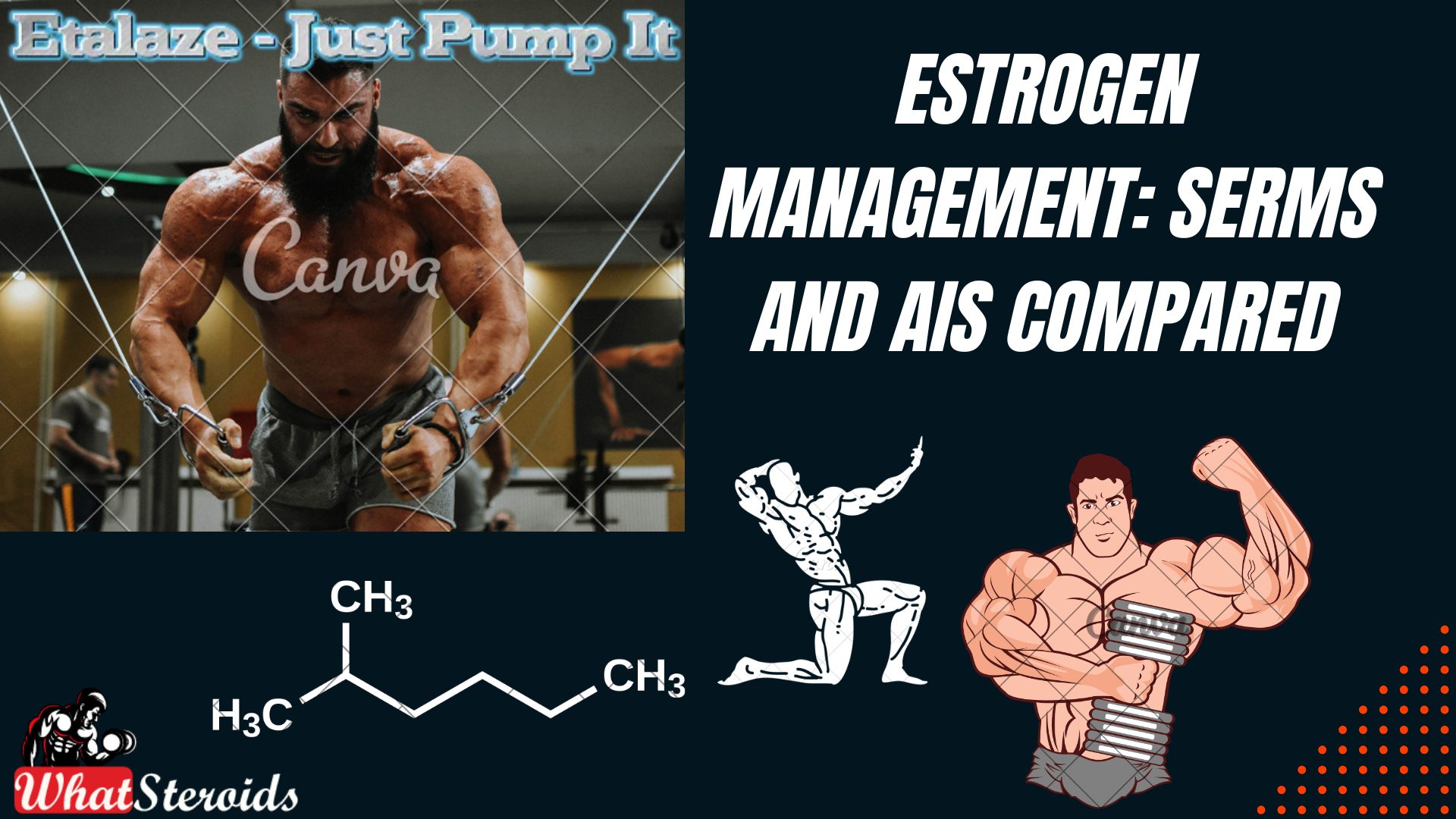
Hormones shape every aspect of athletic performance, from muscle growth and recovery to overall health. Testosterone often dominates the conversation in bodybuilding, but estrogen is just as influential—especially when its levels rise or fall outside the optimal range. For athletes who use anabolic steroids or performance-enhancing compounds, controlling estrogen becomes a critical part of maintaining progress and avoiding setbacks. Two classes of compounds, Selective Estrogen Receptor Modulators (SERMs) and Aromatase Inhibitors (AIs), are central to this process.
Estrogen itself is not the enemy. It supports bone strength, cardiovascular function, and even contributes to muscle development when balanced correctly. Problems arise when estrogen levels climb too high, leading to issues such as gynecomastia (male breast tissue growth), water retention, and increased fat storage. On the other hand, suppressing estrogen too aggressively can cause joint pain, low libido, and hinder recovery. The challenge lies in achieving balance rather than elimination.
SERMs, including Tamoxifen and Clomiphene, act by blocking estrogen’s ability to bind to receptors in specific tissues. This makes them particularly valuable during post-cycle therapy (PCT), when athletes aim to restart natural testosterone production and prevent estrogen rebound. AIs, such as Anastrozole and Exemestane, work differently: they inhibit the aromatase enzyme, reducing the conversion of testosterone into estrogen. Because of this, AIs are often used on-cycle to keep estrogen levels under control.
For athletes, understanding the distinction between these compounds is more than a matter of science—it’s about protecting gains, ensuring recovery, and safeguarding long-term health. Mismanagement of estrogen can undo months of training, while strategic use of SERMs and AIs can help athletes maintain peak performance. This article explores how these tools compare, their practical applications, and the risks that come with misuse.
Related Article: The Ultimate Guide to Foods That Support Hormonal Balance for Bodybuilders
SERMs (Selective Estrogen Receptor Modulators)
Before diving into specific compounds, it’s important to understand how Selective Estrogen Receptor Modulators (SERMs) function. Rather than lowering estrogen levels in the bloodstream, SERMs act by blocking estrogen’s ability to bind to receptors in certain tissues, such as breast tissue or the hypothalamus.
This selective action makes them especially valuable in bodybuilding for post-cycle therapy (PCT), where athletes aim to restart natural testosterone production and prevent estrogen-driven side effects. Below are five commonly referenced SERMs and how each contributes to estrogen regulation.
Tamoxifen (Nolvadex)
Tamoxifen binds to estrogen receptors in breast tissue, preventing estrogen from activating them. This makes it highly effective in reducing the risk of gynecomastia in male athletes. In bodybuilding, it is often used during post-cycle therapy (PCT) to block estrogen’s effects while helping restore natural testosterone production. Tamoxifen does not lower estrogen levels in the blood but instead prevents estrogen from exerting its influence in certain tissues, making it a targeted approach to estrogen management.
Click Here to Buy Nolvadex 10 by Beligas Pharmaceuticals
Clomiphene (Clomid)
Clomiphene works by blocking estrogen receptors in the hypothalamus, tricking the body into thinking estrogen levels are low. This stimulates the release of gonadotropins (LH and FSH), which in turn boost natural testosterone production. For bodybuilders, Clomid is a cornerstone of PCT because it helps restart the body’s hormonal axis after a steroid cycle. Unlike AIs, Clomid doesn’t reduce estrogen production but instead modulates receptor activity to encourage hormonal recovery.
Raloxifene
Raloxifene is another SERM that blocks estrogen receptors in breast tissue, similar to Tamoxifen, but has fewer risks of uterine stimulation. In bodybuilding, it is sometimes used as an alternative to Tamoxifen for managing gynecomastia. It helps prevent estrogen-driven tissue growth without significantly affecting estrogen’s beneficial roles in bone and cardiovascular health. Its selective action makes it useful for athletes who want targeted estrogen control without broad suppression.
Toremifene
Toremifene is structurally related to Tamoxifen and works by binding to estrogen receptors, preventing estrogen from stimulating breast tissue. It is occasionally used in bodybuilding circles for PCT, though less common than Tamoxifen or Clomid. Its main advantage is a slightly different side-effect profile, which some athletes prefer. Like other SERMs, it doesn’t lower estrogen levels but blocks its activity in specific tissues.
Fulvestrant (technically a SERD, but often grouped with SERMs)
Fulvestrant binds strongly to estrogen receptors and accelerates their degradation, reducing receptor numbers. While primarily used in medical settings for breast cancer, some athletes experiment with it for estrogen control. Its mechanism is more aggressive than traditional SERMs, as it eliminates receptors rather than just blocking them. This can reduce estrogen signaling significantly, though it is less common in bodybuilding due to potency and side effects.
Must Read: How Much Is Too Much Cardio? Understanding Heart Rate Zones
AIs (Aromatase Inhibitors)
Aromatase Inhibitors (AIs) take a different approach to estrogen management. Instead of blocking receptors, they target the enzyme aromatase, which is responsible for converting testosterone into estrogen. By reducing estrogen production at its source, AIs are particularly useful on-cycle, when anabolic steroid use can cause estrogen levels to rise sharply.
They help athletes avoid water retention, fat gain, and gynecomastia, though overuse can suppress estrogen too much and harm recovery. The following five examples highlight how different AIs work to regulate estrogen in bodybuilding.
Anastrozole (Arimidex)
Anastrozole inhibits the aromatase enzyme, preventing the conversion of testosterone into estrogen. In bodybuilding, it is widely used during steroid cycles to keep estrogen levels manageable, reducing risks of gynecomastia, water retention, and fat gain. Its strength lies in lowering circulating estrogen rather than just blocking receptors. However, overuse can lead to excessively low estrogen, causing joint pain and reduced libido.
Exemestane (Aromasin)
Exemestane is a steroidal AI that irreversibly binds to aromatase, permanently deactivating the enzyme. This makes it a “suicidal inhibitor,” meaning estrogen production is suppressed more completely. Bodybuilders often prefer Exemestane for its potency and lower rebound risk compared to other AIs. It helps maintain leaner physiques by reducing water retention, though it must be used carefully to avoid estrogen deficiency.
Letrozole (Femara)
Letrozole is one of the most powerful AIs, capable of reducing estrogen levels dramatically. It is sometimes used when athletes face severe estrogen-related side effects, such as advanced gynecomastia. However, its potency can be a double-edged sword, as it may suppress estrogen too much, leading to negative effects on bone health, cholesterol, and recovery. It is generally reserved for short-term or emergency use.
Testolactone
Testolactone is an older AI that also works by inhibiting aromatase activity. Though less commonly used today, it was one of the first agents available for estrogen control. In bodybuilding, it can reduce estrogen conversion modestly, but newer AIs like Anastrozole and Exemestane are more effective. Its historical role highlights the evolution of estrogen management strategies.
Vorozole
Vorozole is a non-steroidal AI that blocks aromatase activity, lowering estrogen production. While not as widely used as Anastrozole or Exemestane, it demonstrates the diversity of compounds available for estrogen regulation. In bodybuilding, it has niche applications but is less popular due to limited availability and stronger alternatives. Its mechanism is similar to other non-steroidal AIs, focusing on enzyme inhibition.
Our Verdict
SERMs and AIs both play vital roles in estrogen management for athletes. SERMs block estrogen’s effects at specific receptors, making them ideal for post-cycle recovery, while AIs reduce estrogen production directly, useful during cycles. Balanced use prevents side effects, but misuse risks health, highlighting moderation and medical guidance.
Also See: A Bodybuilder's Guide to Calorie Dumping
Overall
Estrogen management is a crucial aspect of bodybuilding, especially for athletes using performance-enhancing compounds. We explored how SERMs block estrogen’s effects at specific receptors, making them valuable in post-cycle therapy, while AIs reduce estrogen production directly, proving useful during cycles. Both approaches aim to prevent side effects such as gynecomastia, water retention, and fat gain, while supporting recovery and hormonal balance.
However, misuse can lead to health risks, including joint pain, low libido, or impaired cardiovascular function. Ultimately, moderation, knowledge, and medical guidance are essential to harness these tools safely and effectively in athletic performance.
-

 Bodybuilding Products2 years ago
Bodybuilding Products2 years agoTelmisartan In Bodybuilding: An Expert’s Advice
-
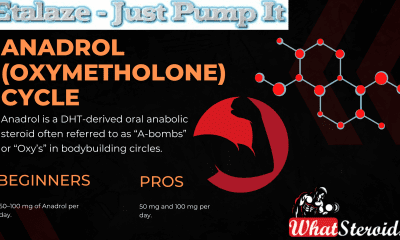
 Steroids2 years ago
Steroids2 years agoAnadrol Cycle: Benefits, Doses, Alternatives, etc.
-
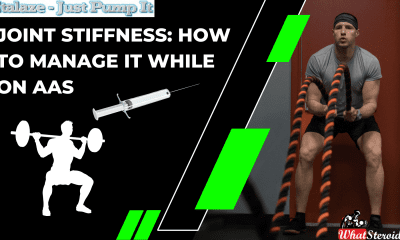
 Anabolic Steroids1 year ago
Anabolic Steroids1 year agoJoint Stiffness: How to Manage It While on AAS
-
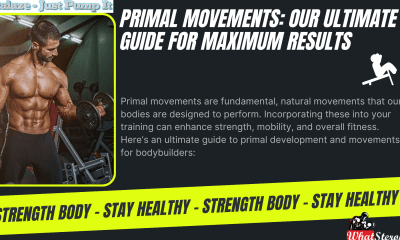
 Bodybuilding1 year ago
Bodybuilding1 year agoPrimal Movements: Our Ultimate Guide for Maximum Results
-
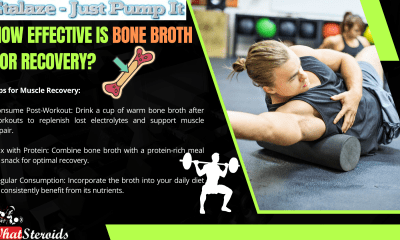
 Bodybuilding1 year ago
Bodybuilding1 year agoHow Effective is Bone Broth for Recovery?
-
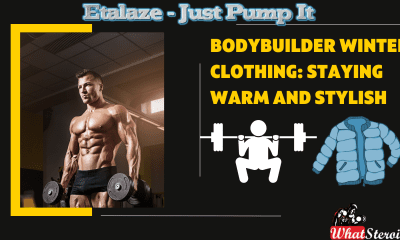
 Steroids1 year ago
Steroids1 year agoBodybuilder Winter Clothing: Staying Warm and Stylish
-
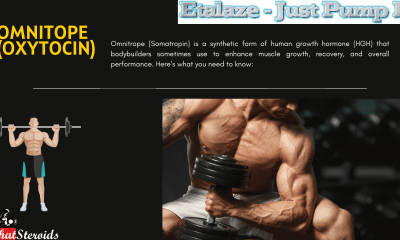
 Steroids1 year ago
Steroids1 year agoOmnitope (Oxytocin)
-
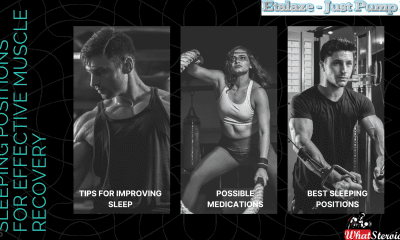
 Steroids1 year ago
Steroids1 year agoSleeping Positions for Effective Muscle Recovery
-

 Bodybuilding2 years ago
Bodybuilding2 years agoHow Much Is Too Much Cardio? Understanding Heart Rate Zones
-
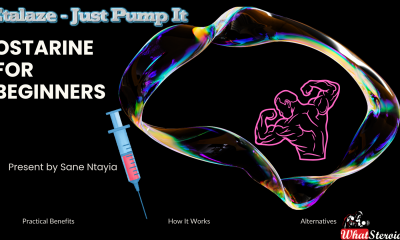
 Steroids12 months ago
Steroids12 months agoOstarine For Beginners: The Ultimate Guide
-
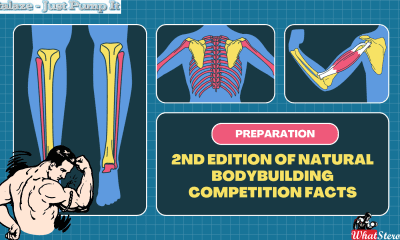
 Bodybuilding1 year ago
Bodybuilding1 year ago2nd Edition of Natural Bodybuilding Competition Facts
-
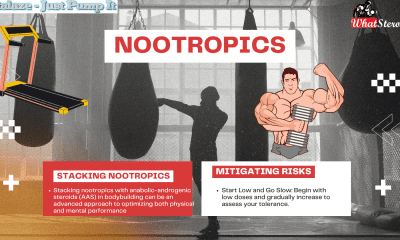
 Bodybuilding1 year ago
Bodybuilding1 year agoAre Nootropics a Better Option to AAS?
-

 Bodybuilding1 year ago
Bodybuilding1 year agoTop Video Games for Bodybuilders in 2025
-
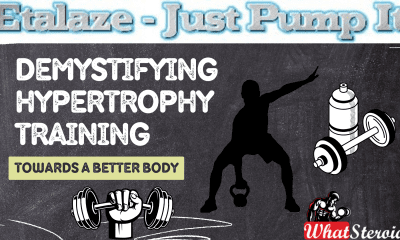
 Bodybuilding2 years ago
Bodybuilding2 years agoDemystifying Hypertrophy Training
-

 Steroids11 months ago
Steroids11 months agoTips on How to Store Peptides and HGH
-
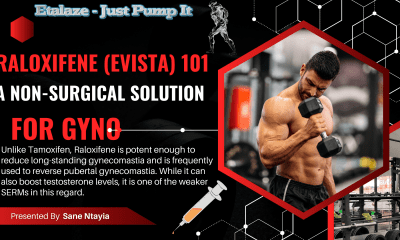
 Steroids9 months ago
Steroids9 months agoRaloxifene (Evista) 101: A Non-Surgical Solution for Gyno
-
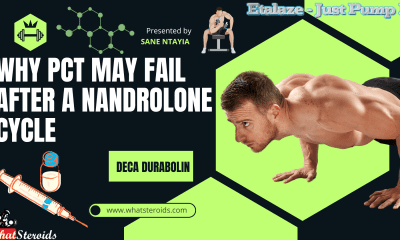
 Steroids10 months ago
Steroids10 months agoWhy Post-Cycle Therapy (PCT) Fails After a Nandrolone Cycle
-

 Beginners1 year ago
Beginners1 year ago14 Morning Run Safety Tips for Bodybuilding and Fitness
-
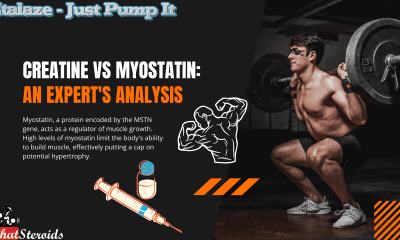
 Steroids9 months ago
Steroids9 months agoCreatine vs Myostatin: An Expert’s Analysis
-
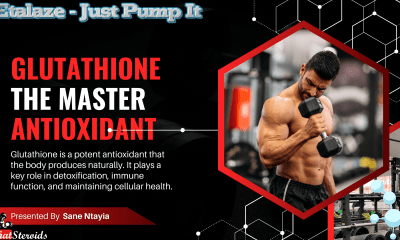
 Steroids1 year ago
Steroids1 year agoGlutathione – The Most Underrated Antioxidant
-

 Bodybuilding2 years ago
Bodybuilding2 years agoList of FDA-Approved Peptides
-

 Product Reviews2 years ago
Product Reviews2 years agoTop Vitamins for Skin Health
-
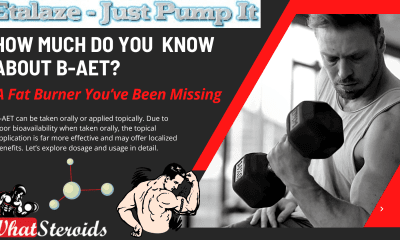
 Anabolic Steroids2 years ago
Anabolic Steroids2 years agoHow Much Do You Know About B-AET? A Fat Burner You’ve Been Missing
-
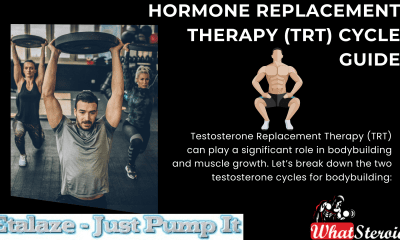
 Bodybuilding1 year ago
Bodybuilding1 year agoHormone Replacement Therapy (TRT) Cycle Guide
-

 Anabolic Steroids2 years ago
Anabolic Steroids2 years agoAnavar Cycle for Men and Women


